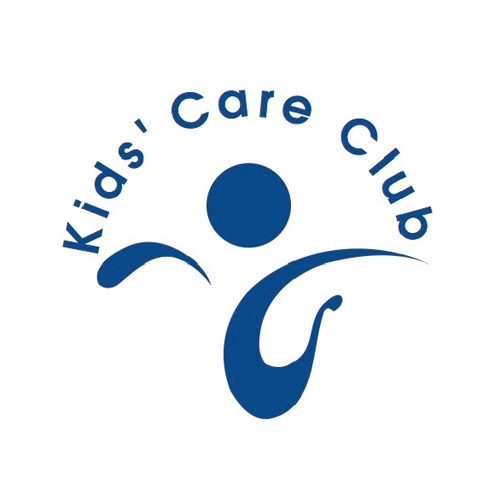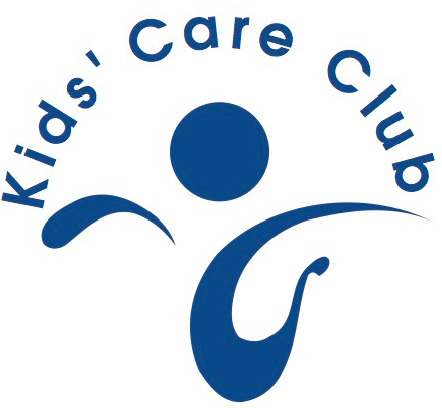Challenging behaviors can be, well, challenging to handle. It’s easy to get frustrated, to want to punish instead of guide.
Kids’ Care Club follows the NAEYC challenging behaviors standards. This means guiding children to appropriate behavior rather than punishing or giving them answers. It also means putting a high value on trust and relationship building when creating teaching strategies.
What Are NAEYC Challenging Behaviors?
There are varying opinions on what counts as a challenging behavior – one parent or child care professional may view a behavior as challenging, while another would not. There are times and situations where behavior is appropriate and times when it is not.
A behavior is challenging if it interrupts a child’s life – whether that means learning or age-appropriate playing – or the lives of those around them. Challenging behavior can often affect learning experiences or put the child, their peers, or adults in danger.
Challenging behaviors don’t only threaten their safety and development in the moment, they can also lead to social and educational issues later in life.
These behaviors manifest themselves in different ways. No child is the same. Some challenging behaviors include:
- Biting, scratching, or hair-pulling
- Injuring others
- Defiance, such as refusing to engage in tasks
- Excessive crying or yelling
- Fussiness, such as refusing to eat or wear appropriate clothes
These behaviors can be frustrating, but most kids are not engaging in challenging behaviors to get on your nerves. Many – if not all – challenging behaviors are a way for a child to get their wants and needs met, especially when there are difficulties with communication.
What Causes Challenging Behaviors?
Many researchers, clinicians, and educators follow a four-function approach to behavior. These functions, or the reasons behind behavior, are:
- Communication
- Attention
- Stimulation
- Coping
Different educators have different ways of referring to the four functions, but most agree on the basic principles.
1. Communication
Most young children are attempting to communicate the following:
- Access to items they want or need
- Escape from non-preferred items or activities
This is not an exhaustive list. However, these two functions of communication are great to keep in mind when a child is engaging in challenging behavior.
2. Communication
Most kids like attention in one form or another. Whether it’s from teachers or parents, a kid may engage in challenging behavior to receive that attention.
This function is especially heightened if the child gets little attention when not engaging in challenging behavior.
3. Stimulation
Some challenging behavior isn’t due to external factors but an internal need. Overstimulation, under-stimulation, or frustration are all reasons a child may engage in challenging behavior.
Stimulation-based behaviors include physical behaviors such as biting or climbing on furniture, as well as verbal behaviors such as clicking their tongue or mimicking animal sounds.
Some experts call this behavior stimming. Stimming doesn’t always have to be harmful or challenging. For example, some kids shake their hands and jump up and down when they’re excited. This behavior typically doesn’t present itself as challenging.
4. Coping
When a child is given a task that’s too difficult, or too many tasks at once, they may grow frustrated and angry. To cope with the anger, some kids react with challenging behavior.
Coping ties in well with the other three functions. A lack of stimulation, no attention, and a lack of escape are all instances where coping skills would be useful.
What Can You Do to Help Your Child Overcome Challenging Behaviors?
Different functions require different solutions. A good rule to keep in mind is that if you can find the function you can find the solution.
For communication-based functions, work on teaching the child how to ask for a break. This gives them a lesson on communication, as well as a structured escape from the task. Adults take breaks – or escape – from tasks all the time. Offer the same luxury to your child.
Remember, you don’t have to give breaks every time the child asks, especially after they have learned how to communicate effectively.
If the communication is access- or attention-based, teach them how to ask for what they want. In doing this, you may have to ignore crying and tantrums that are pleas for attention, while making it a point to give a lot of attention when the child is behaving appropriately.
Functional communication doesn’t have to be verbal. Some kids are behind in language skills, or simply too young to speak. Sign language or a picture-communication system are great alternatives.
Work on replacing harmful stim-based behaviors, or expressing them in a safe way. For example, a child who feels the need to climb can be given safe places to do so, such as a small “mountain” of pillows rather than climbing onto a high sofa. A child who wants to hit her head on the wall can be encouraged to put a rubber ball against her head instead.
There are different points in the presentation of the behavior where you can intervene. There are proactive strategies, which occur before the behavior starts, and reactive strategies implemented after or during a behavior.
Neither option is wrong – different behaviors require different strategies.
Proactive Help for Behaviors
Proactive behaviors give the child tools or motivation to resist engaging in the behavior. Examples of proactive strategies include:
- Reorganizing their environment
- Creating a schedule or timer regarding work and breaks
- Making the task easier
- Providing choices
Reorganizing the environment can be as simple as removing a triggering item. For example, if you know the child will throw a tantrum over a tablet, place the tablet where they cannot see it and aren’t as tempted.
Making tasks easier helps you meet the child at their level. If they’re not ready for a particular subject, trying to learn it will be frustrating and stressful. If the child is having too much difficulty at one level, go back to what they know and work your way back up.
Giving children choices makes them more in control of their environment. It also teaches them decision-making skills that are crucial later in life.
We can’t always make choices, but we often choose the food we eat and the clothes we wear. Let your child be a part of these normal, day-to-day decisions.
Reactive Help for Behaviors
Reactive strategies involve consequences for behavior. Consequences don’t have to be negative. The desired consequence could be earning time on their tablet after getting a predetermined amount of work done. This is often referred to as positive reinforcement – giving the child a preferred item or activity to increase desired behavior.
A consequence can also be a punishment. Punishments include:
- Removing access to a desired object or activity
- Time out
- Extra chores
Most in the field recommend against punishment. While punishment can work, some techniques, such as spanking or yelling, can have unintended consequences later in life. These consequences include a higher chance of depression or anxiety and less positive engagement in school.
At Kids’ Care Club, we do not use punishment in any form. Instead we use positive guidance, which teaches appropriate behavior while treating the child with respect.
Guidance over Punishment
NAEYC strongly recommends guidance over disciplining (punishing) children, whether at home, in a classroom, or a clinic setting.
From an adult perspective, we often think that children should know better. However, preschool-aged children have few experiences. They have not yet learned exactly what is a right or wrong reaction.
Because of this, guiding children to the correct answer, rather than punishing wrong answers, is the best way.
Use every mistake as a learning opportunity. Guidance means creating a welcoming and open environment. Don’t put shame in your arsenal of tools. Build a relationship with the child and help them build relationships with their peers.
Teaching kids functional communication through guidance can create future leaders of those children. While you will often have to step in to help kids solve issues, giving them the tools to do so on their own is crucial to development.
The best way to give children their problem-solving tools is by solving problems with them instead of for them. Avoid deciding on how to get past conflict on your own. Instead, you can use some of the following strategies:
- Assess the scene
- Help the children calm down
- Ask all involved what their side of the story is
- Ask those involved what they need
Once you know both perspectives, guide the kids to the appropriate solution. Avoid forcing the kids to apologize, but suggest what they could do to make the other feel better.
How Does Kids’ Care Club Help Your Child Overcome Challenging Behaviors?
At Kids’ Care Club, we follow the standards set by the National Association for the Education of Young Children (NAEYC). We choose guidance over punishment in a nurturing environment. All behavior is met with consequences, whether positive as described above, or what is known as “natural and logical consequences.” Virtually every action has a consequence that might logically follow – for example, throwing a toy at Mom means she doesn’t let you use that toy anymore). Many actions also have a consequence that will naturally follow without adult intervention – for example, if you yell at people, they will choose not to play with you. We let children experience the natural consequences of their actions if they will not be harmful to them. If a safe natural consequence does not exist, we give a logical consequence. In either case, we explain to the child how their behavior led to this. We also help them think of ways to act differently in the future in order to achieve more desirable outcomes.
What are NAEYC Standards?
The NAEYC has been setting standards for high-quality learning for kids from birth to eight years old since 1926.
Their core beliefs shaped by their 10 standards of excellence include:
- Excellence and innovation
- Transparency
- Reflection
- Equity over equality
The NAEYC helps children and educators in the classroom setting and assists in healthy relationship development with families. They uphold trust and relationship building as a central tenet of education.
Kids’ Care Club shares these beliefs and implements them in our day-to-day teachings.
In Conclusion
While maneuvering through challenging behavior with your children or students can be frustrating, strive to keep a level head. Use guidance over punishment and allow children to come to agreements as independently as possible.
When you become lost and frustrated, turn to proven industry standards like the NAEYC standards implemented at Kids’ Care Club. Keep grace and understanding in your tool belt – remember, young children lack the knowledge and experience we adults have obtained over the years. Use your collected knowledge and experience to pass on positive social strategies to future generations of kids!






